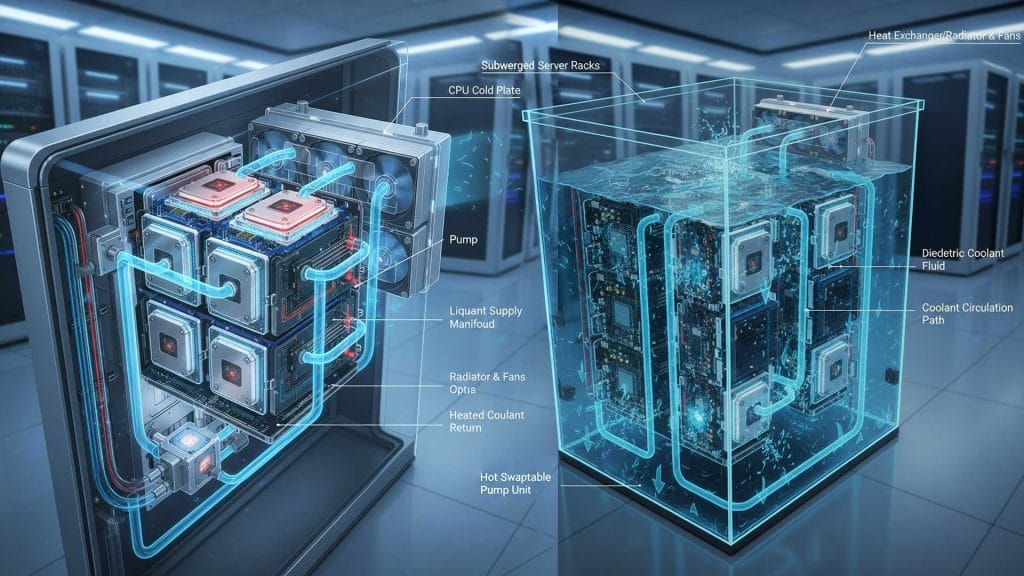Direct-to-Chip vs Immersion Cooling – Which is Best for AI
Providing a deep comparative analysis of Direct-to-Chip (DTC) vs. Immersion Cooling through the lens of AI workloads and infrastructure needs.
Artificial Intelligence (AI) is changing the rules of the game in data centres. Training large language models and running AI workloads demand incredibly powerful GPUs and accelerators — and those generate huge amounts of heat. Traditional air cooling is already struggling to keep up, which is why liquid cooling has quickly moved from niche to necessity.
Two technologies are leading the charge: Direct-to-Chip (DTC) cooling and Immersion Cooling.
Both deliver much better performance than air, but which one is the right fit for AI workloads? Let’s break it down.
Cooling Efficiency
- DTC – Pipes bring liquid directly to cold plates attached to CPUs or GPUs. It’s efficient for chips but doesn’t cover the rest of the system (like memory or networking), which still need fans.
- Immersion Cooling – Entire servers are submerged in a special fluid, meaning every component stays cool — no fans required.
For AI – Immersion wins because it cools the whole system, not just the chips.
Density and Scale
- DTC – Works well, but you’re still partly limited by airflow.
- Immersion – Packs more GPUs into less space — perfect for the huge AI clusters we’re seeing today.
If you’re scaling big AI projects, immersion offers more headroom.
Energy and Sustainability
- DTC – Cuts energy use compared to air cooling but still relies on hybrid systems.
- Immersion – Eliminates fans, reduces power draw, and makes waste heat recovery easier.
On the sustainability front, immersion is the greener choice.
Cost Considerations
- DTC – Lower upfront costs, especially for hybrid environments.
- Immersion – Higher initial investment, but operational savings (energy efficiency, longer hardware life) usually make it cheaper in the long run.
Which One Should You Choose?
- DTC – Great for organisations gradually adding AI alongside traditional workloads.
- Immersion Cooling – Best for dedicated AI environments, where maximum performance, density, and sustainability matter most.
Conclusions
Both options are better than sticking with traditional air cooling! But as AI workloads grow in scale and intensity, immersion cooling looks like the long-term winner — delivering the performance, efficiency, and sustainability that next-generation AI demands.

